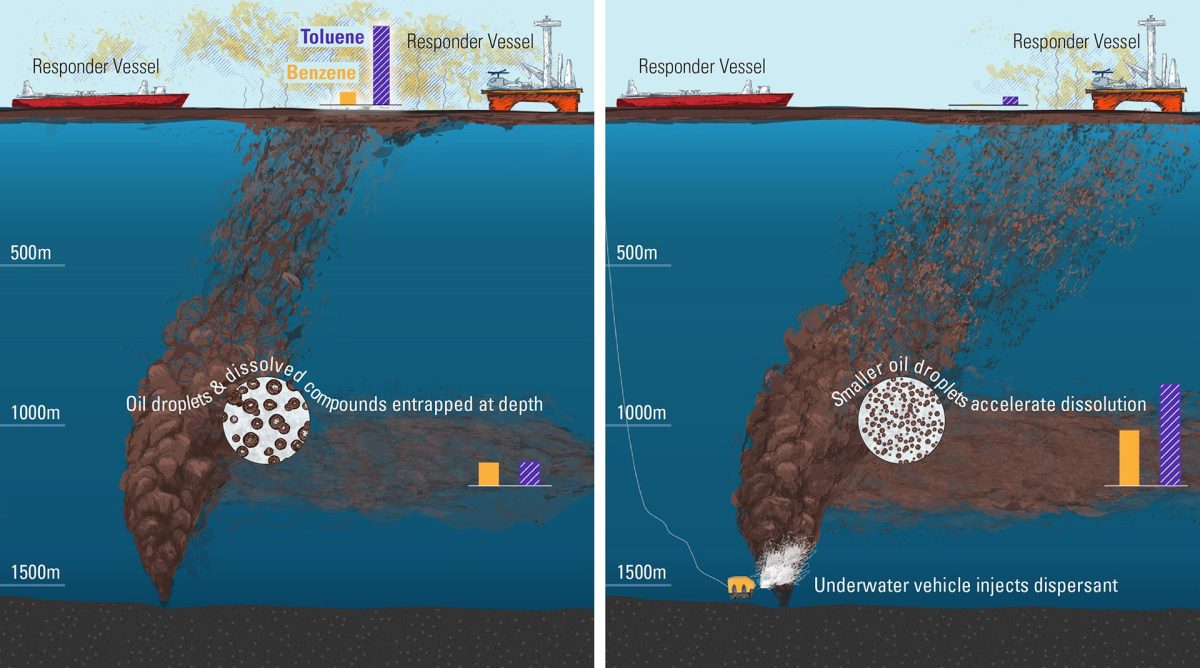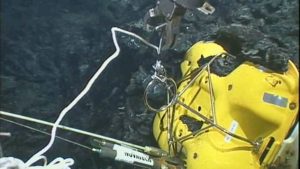A new study modeled the impacts of the deep-sea injection of dispersants during Deepwater Horizonand what might have happened if dispersants were not used. The model showed that, without dispersants, more oil would have risen to the surface, putting more toxic benzene and toluene into the air. On the other hand, using dispersants greatly reduced the size of oil droplets, so that more oil was swept away in deep currents and did not rise to the surface. As a result, the amount of toxic gases released into the air was diminished and posed fewer health risks to workers. (Illustration by Natalie Renier, © Woods Hole Oceanographic Institution)
Image and Visual Licensing
WHOI copyright digital assets (stills and video) contained on this website can be licensed for non-commercial use upon request and approval. Please contact WHOI Digital Assets at images@whoi.edu or (508) 289-2647.








